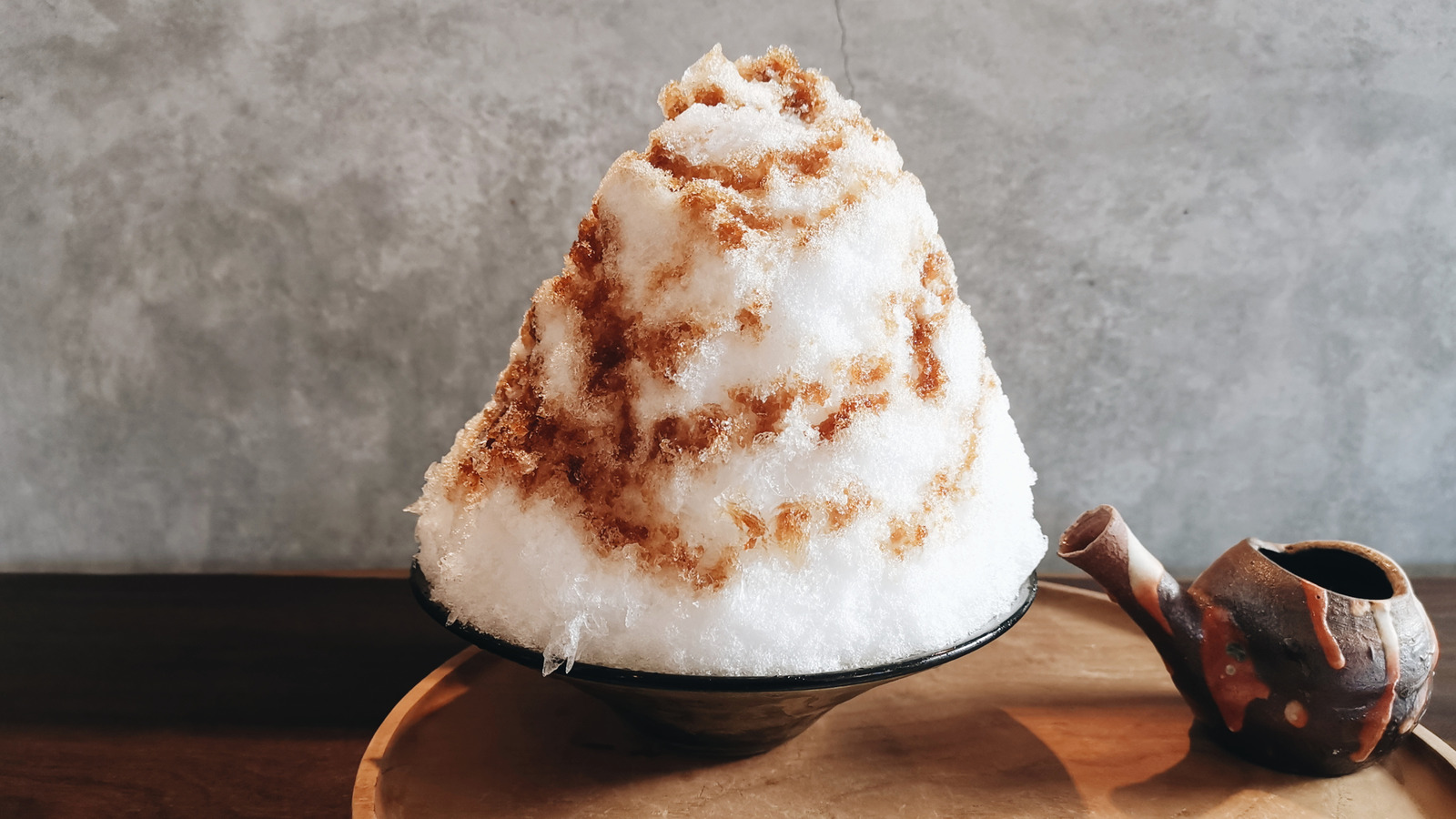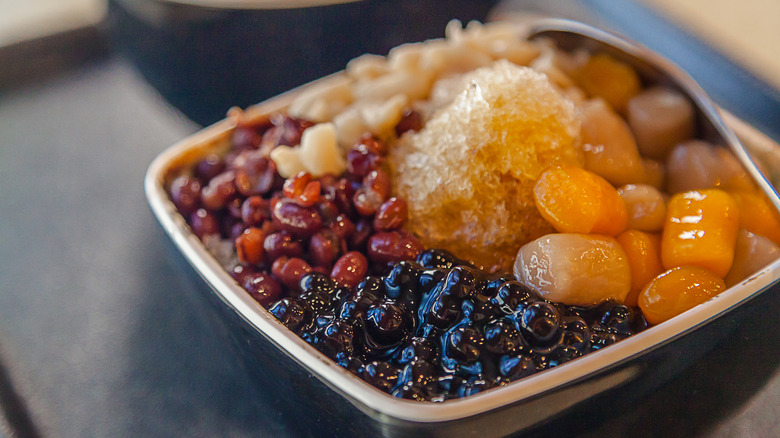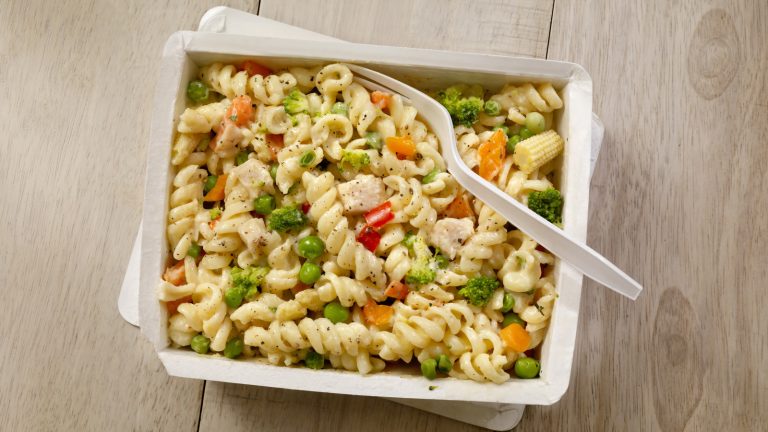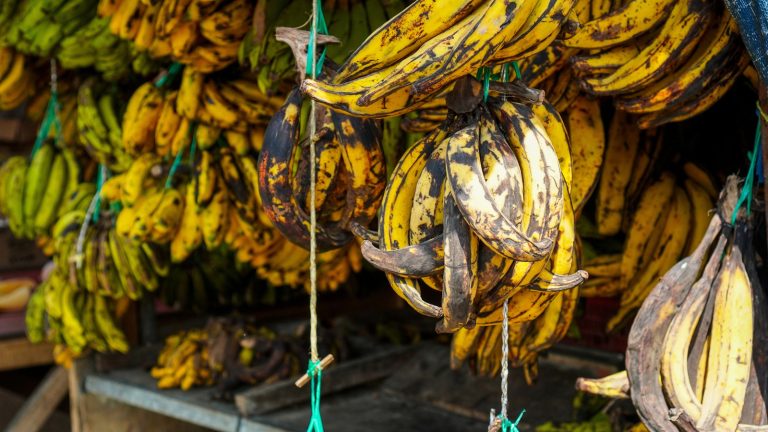The beauty of shaved ice is in its simplicity: frozen water drenched in syrup makes for a much-needed refresher on a sweltering afternoon. The sweet treat has taken over American main streets, but anyone who’s eaten their way through Asia, or a Hawaiian food truck menu, knows there’s one ingredient you can’t miss — and that’s condensed milk (not to be confused with evaporated milk). Whether it’s the snow-like mountains of South Korea’s bingsu and Japan’s kakigori, or the icy flakes of Taiwan’s bao bing, drizzling a bit of the sweet liquid adds a silky texture and creaminess that contrasts the fresh zing of any fruity flavors.
When the Chinese started mixing crushed ice with fruit syrup in around 1000 B.C., the desserts were gatekept for society’s richest. Similarly, in the Heian period in Japan, ice was a rare commodity — so it was only the wealthy who could enjoy the icy treat, served with vine sap, crushed plums, and hydrangeas in huge metal bowls.
Things all changed in the 19th century, when Japan began to buy ice en masse from America (dubbed Boston Ice), and trailblazer Kahe Nakagawa quickly racked up two-hour-long queues when he launched the first kakigori cafe in Bashamishi. While the original pioneers would have needed a time machine to use condensed milk, which was only invented in the 1850s, travel Japan today, and you’ll easily find it as a snow cap topping alongside matcha, strawberry, lemon syrups, and fresh fruit in most cafes. It’s fair to say that kakigori is now one of Japan’s traditional well-loved desserts alongside mochi, dorayaki, and dango.
What other toppings can you add?
Across the world, you’ll find as many variations of crushed ice as there are colors of fruity syrups. In the 19th century, Japanese plantation workers brought the dessert to Hawaii, with locals adding native toppings like guava and li hing mui (dried plum), alongside vibrant fruity syrups like blue raspberry or bubblegum (which you can also add to your coffee), sometimes serving the treat with an ice cream scoop inside.
The bao bing dessert of China, on the other hand, is more than just a pile of shaved ice — but boasts an eclectic array of toppings. Add red adzuki beans, taro balls, peanuts, mung beans, tapioca pearls, and glutinous rice balls, alongside, of course, condensed milk, to make the perfect sharing dessert (don’t forget a couple of spoons!).
And then there’s Korea’s patbingsu, where pillowy snow ice meets red beans, chewy tteok (rice cakes), fresh fruit, and toasted soybean powder, versus the Philippines’ halo-halo, which is a celebration of texture: ingredients like sweetened beans, flan, jelly cubes, and often a dramatic scoop of purple yam ice cream are layered in a slender glass to create a visual spectacle that’s a feast for the eyes as well as the stomach. You can try your hand replicating these at home, but you might fall short at the Peruvian edition – shikashika – made from glacier ice brought down from the Andes. But whether your ice is sourced from a mountaintop or the back of your freezer, we’re pretty sure it will taste delicious once it’s crowned by a cup of condensed milk.






